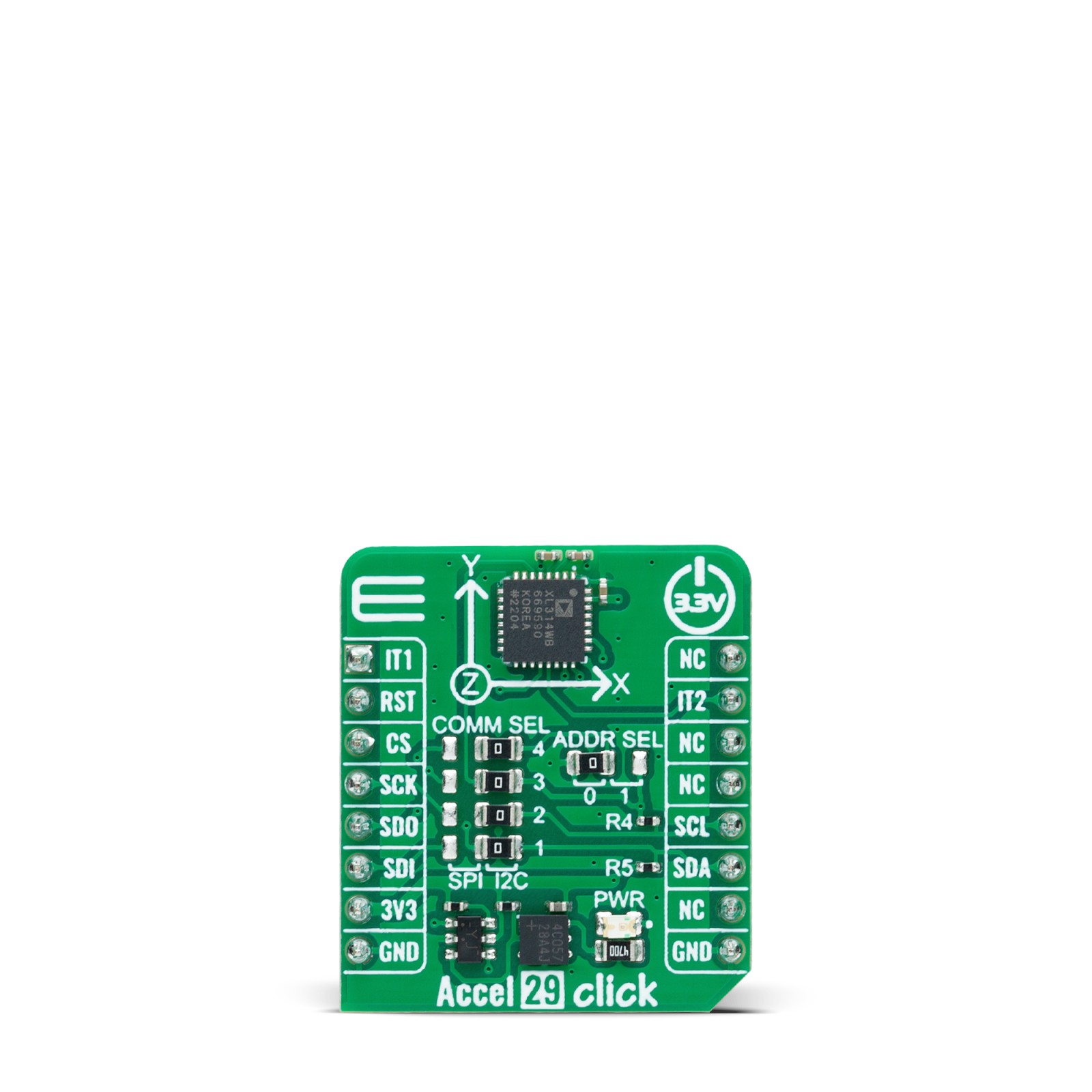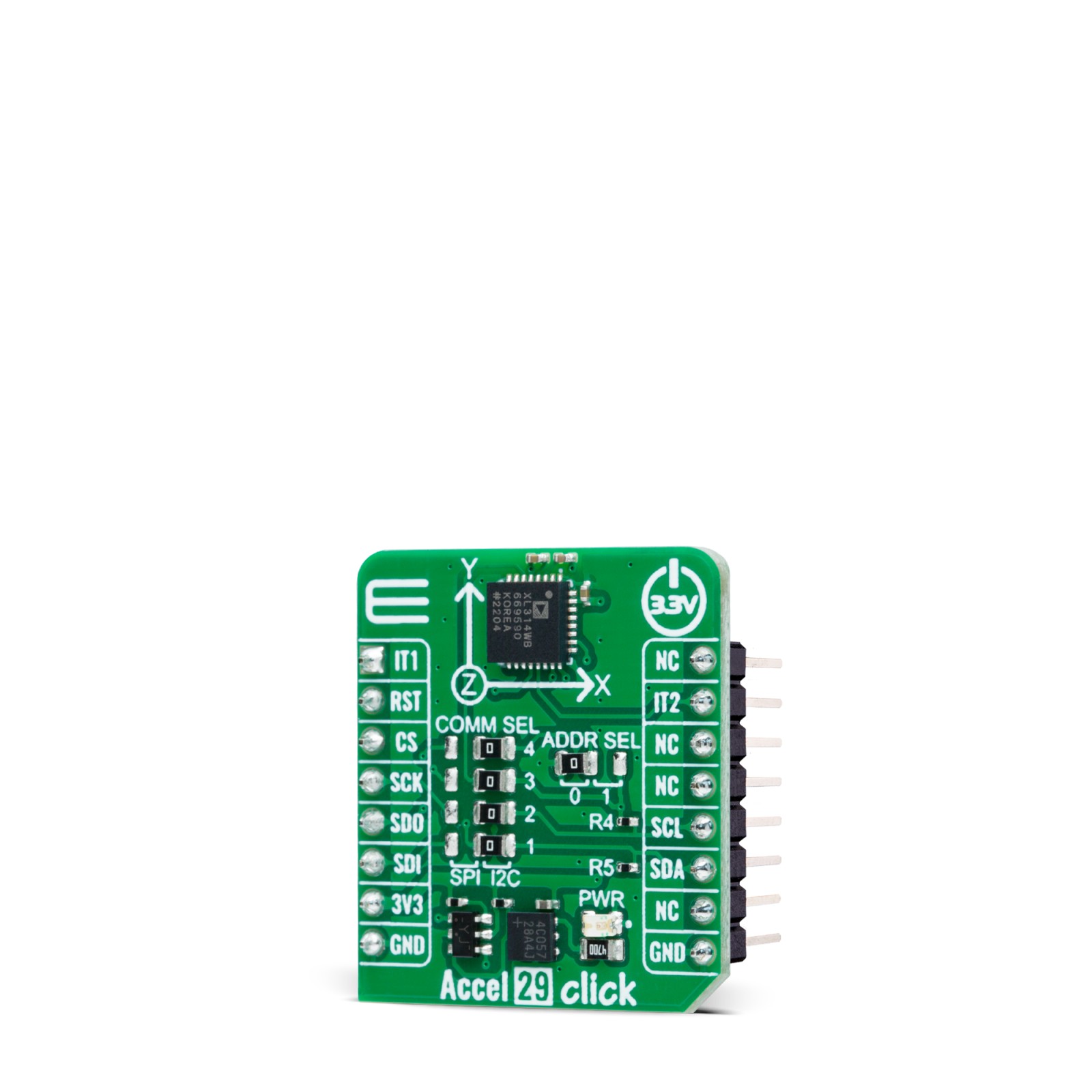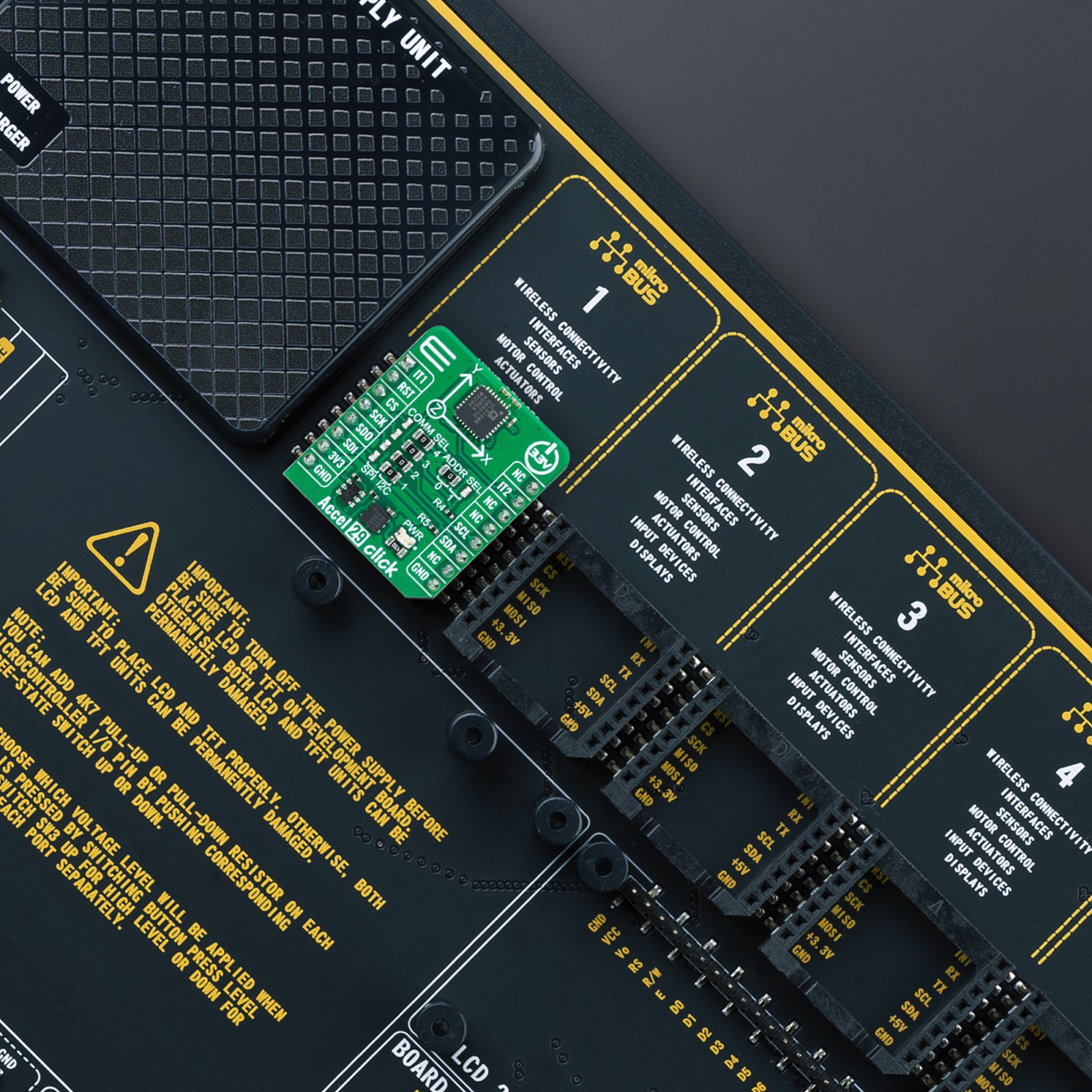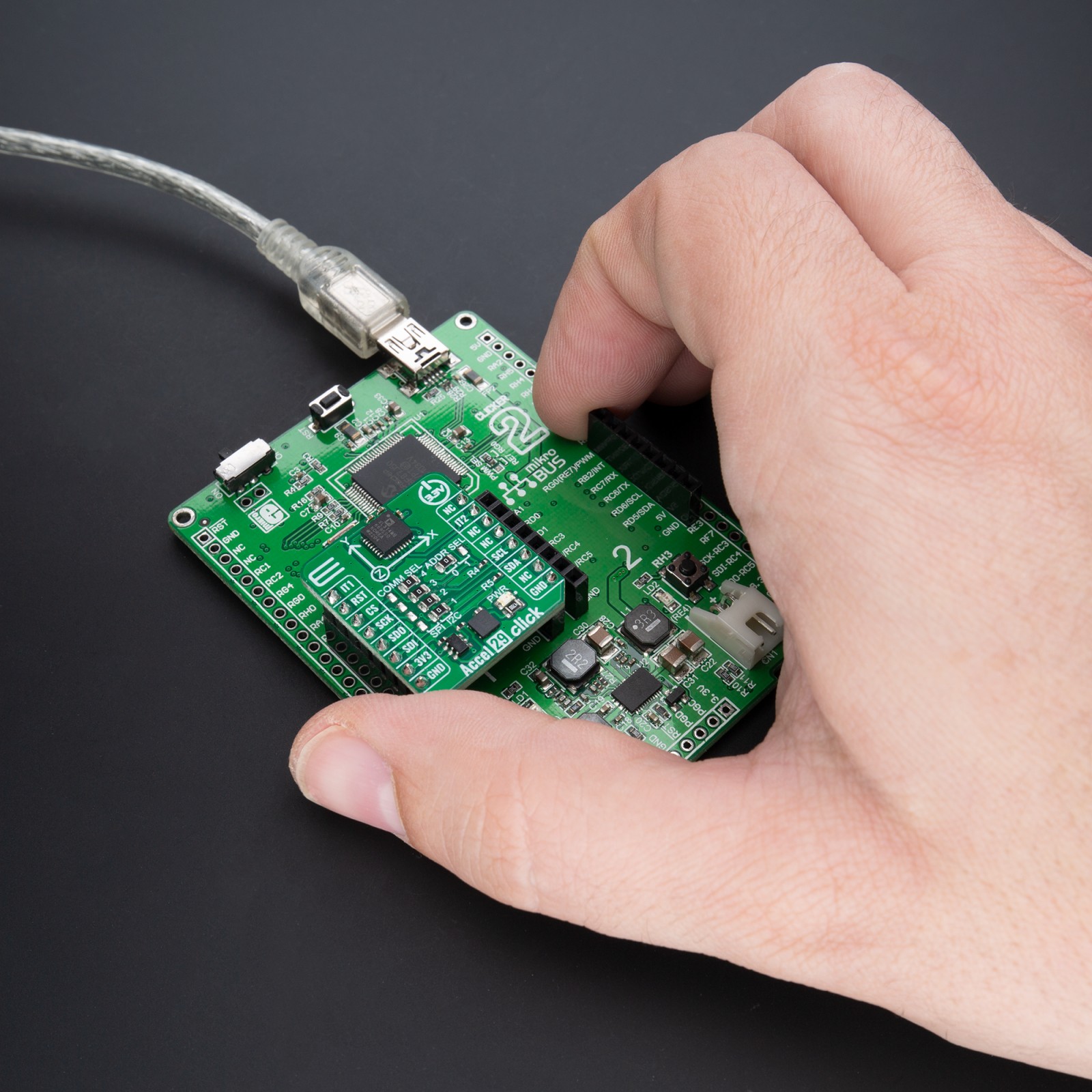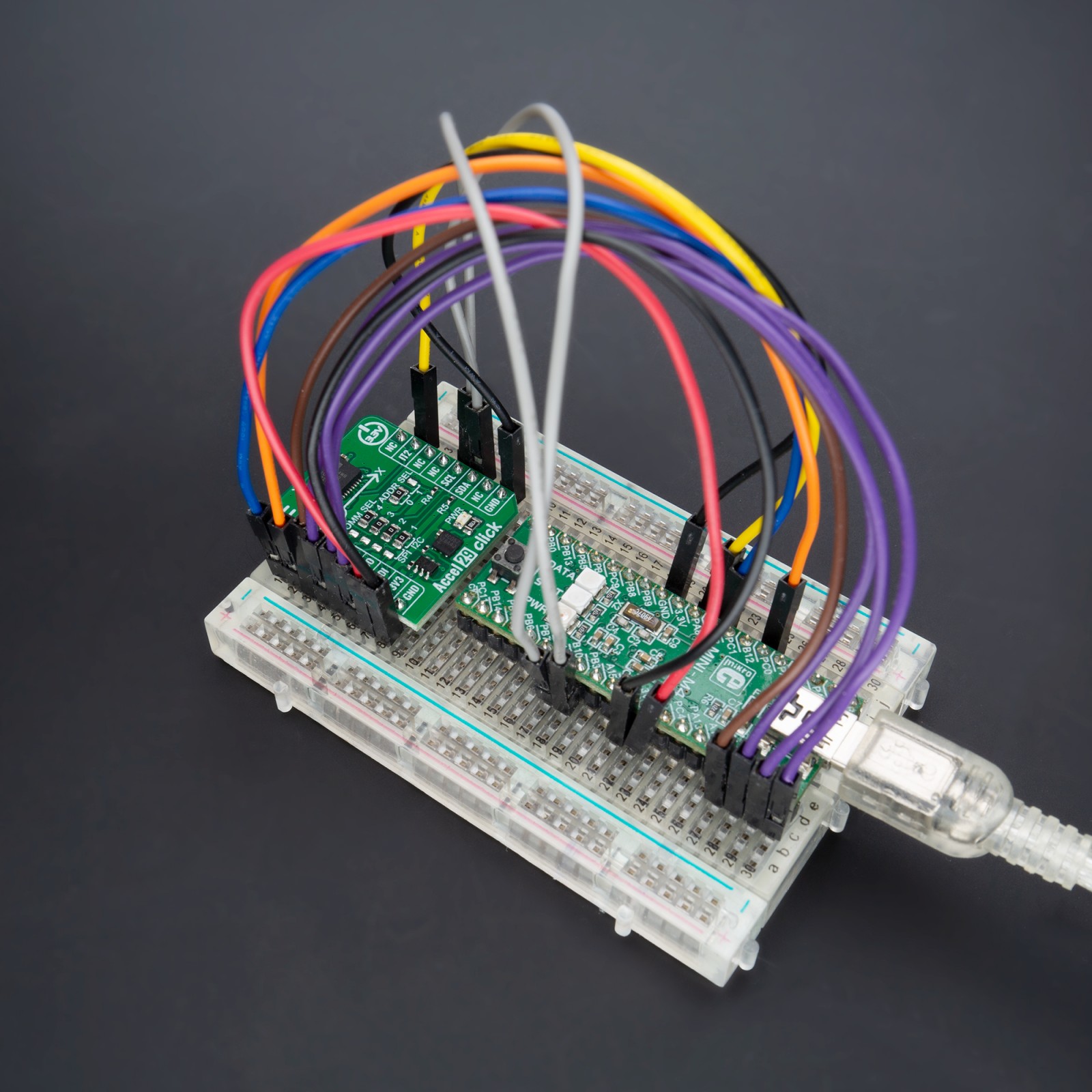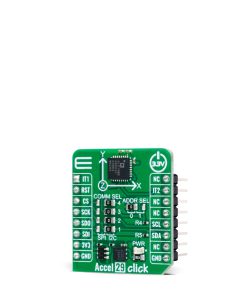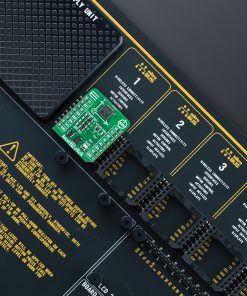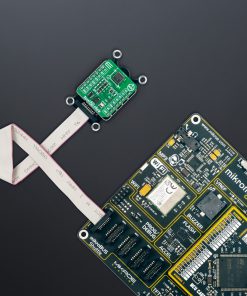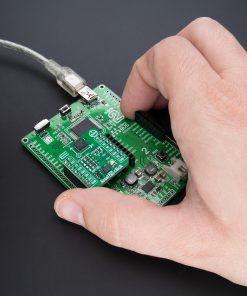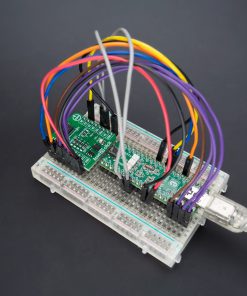Accel 29 Click
R725.00 ex. VAT
Accel 29 Click is a compact add-on board that contains an acceleration sensor. This board features the ADXL314, a three-axis ±200g accelerometer from Analog Devices. The ADXL314 offers 16-bit digital output data with a configurable host interface that supports SPI and I2C serial communication. An integrated memory management system with a 32-level FIFO buffer can store data to minimize host processor activity and lower overall system power consumption. Low power modes enable intelligent motion-based power management with threshold sensing and active acceleration measurement at low power dissipation. This Click board™ is suitable for multiple applications such as motion-activated functions, shock detection, high-force event detection, and more.
Accel 29 Click is fully compatible with the mikroBUS™ socket and can be used on any host system supporting the mikroBUS™ standard. It comes with the mikroSDK open-source libraries, offering unparalleled flexibility for evaluation and customization. What sets this Click board™ apart is the groundbreaking ClickID feature, enabling your host system to seamlessly and automatically detect and identify this add-on board.
Stock: Lead-time applicable.
| 5+ | R688.75 |
| 10+ | R652.50 |
| 15+ | R616.25 |
| 20+ | R593.05 |

